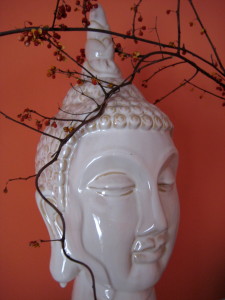
– Photo by Jan Ketchel
I was energetically drawn to read Scott Stossel’s article, My Anxious, Twitchy, Phobic (Somehow Successful) Life, in the January/February issue of The Atlantic. Though totally appreciative of his full personal disclosure, I was disappointed in the outcome of his lifelong journey to lift this pervasive, crippling symptom from his life; his seemingly best cure—a combination of Xanax, Inderal, and either scotch or vodka—necessary prior to a speaking engagement in order to pull it off. It’s pretty clear that the subject of anxiety needs revisioning beyond the failed rational therapies of our time if we are to truly tackle this mythic giant.
Carl Jung and Joseph Campbell spent much of their lives demonstrating the relevance of myths to modern life. Carl Jung insisted that analsands discover the myth that governed their own lives that they might effectively find the path to their individuation. I propose that we treat anxiety as the curtain call to our personal myths, that is, that when anxiety calls, we treat ourselves to a mythic encounter, a mere mortal summoned to interact with the gods.
When anxiety calls we become helpless children, shuddering before a world of giants—adults—who have total power over our life and death. How will we fare in the encounter? Will we survive, be cared for, tossed aside, punished, welcomed, accepted? These are the fears and hopes we harbor in our smallness when we enter into our mythic encounters.
What will his/her mood be when he/she enters the room? I shudder.
Will my work be acceptable? I shudder.
Will I get promoted? I shudder.
Will I be expected to have sex? I shudder.
Will I be capable of having sex? I shudder.
Will the plane fall from the sky? I shudder.
Will I be able to perform? I shudder.
Will I lose it? I shudder.
Will I be attacked? I shudder.
Behind each of these anxious anticipations lies a mythic encounter, whether it be with a goddess, a good witch, a bad witch, an ogre, a wise god, or some other permutation of power that we feel inadequate in the face of. Our challenge, in this life, is to become the hero that takes the journey to secure our rightful place and find fulfillment. That journey, like all heros’ journeys, is filled with adventures into mythical realms; encounters with dragons, tricksters, witches and helpers that challenge and support our growing ability to hold our own as we follow the yellow brick road.
Anxiety is the necessary alarm that summons us to our challenge and ultimately asks us to turn off its shrill call. The tasks are formidable; all myths are epic and lifetime adventures. Sometimes the challenge is to unmask the larger-than-life wizard, like in Oz, to subdue a projection that generates anxiety. Sometimes the challenge is to marry into the gods, to experience the numinous and ecstatic without disintegration. Sometimes the challenge is to wrestle the giant to the ground, overcoming our fear that we are not enough, that we have no power. Turning off the anxiety alarm might also mean challenging ourselves to consciously learn to deeply relax and regulate the nervous system; the mythic encounter here being with the body itself.

– Photo by Jan Ketchel
In revisioning our lives in this world as, ultimately, anxious encounters with the mythic realm, we offer ourselves the opportunity to hone our beings to continue as mythical, magical beings in infinity beyond the human form. Thank you anxiety for waking us to our magical selves! May we all be heroes that accept where we are, our starting points of fear and trembling pointing out our immediate challenges.
Heroes come in all forms and each must face their own unique challenges. If we are here in this world, we are already heroes, even if reluctantly so. We all made it through the dark canal, cut the cord, and became adventurers in a new world. Don’t stop now!
On the mythic adventure,
Chuck






